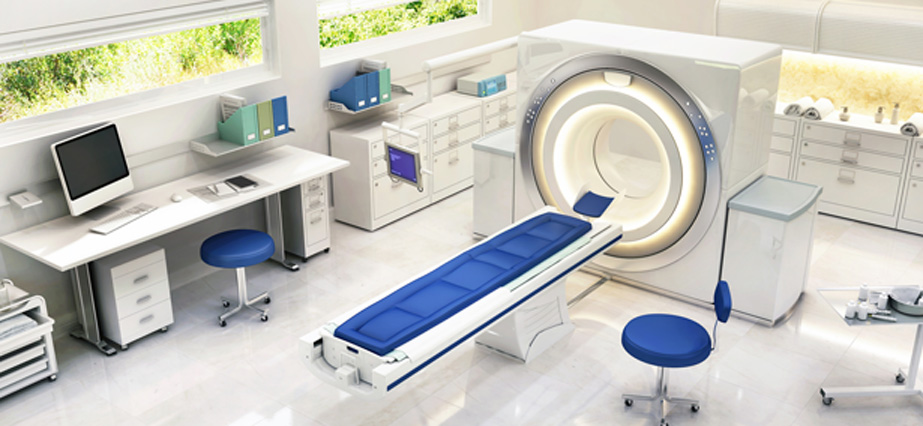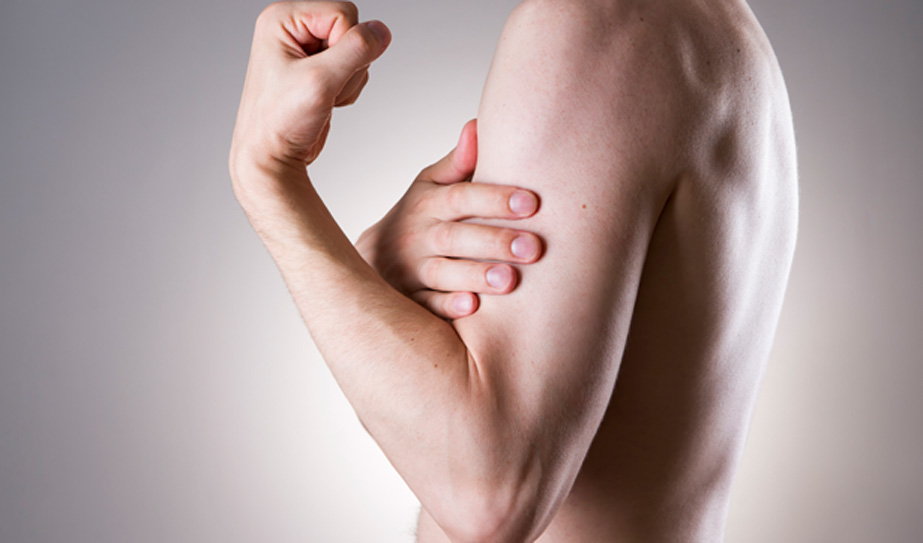
Biceps tendonitis may be caused by overuse, sudden heavy load or repetitive motion, leading to micro tears in the tendon.
Athletes such as baseball players, swimmers, tennis players and golfers are at increased risk of tendonitis in their shoulders, arms and elbows.
Symptoms of Biceps Tendonitis
A sudden and severe pain in the upper arm or at the elbow may be a sign of biceps tendonitis. The individual may hear or feel a “pop” when the tendon tears. Other symptoms may include:
- Bruise on the upper arm or forearm near the elbow
- Weakness in the shoulder or elbow
- Difficulty rotating the arm from a “palm down” to a “palm up” position
- A change in the contour of the front of the bicep in the upper arm (also known as “Popeye muscle”)
Causes of Biceps Tendonitis
The condition may be caused by:
- Wear and tear of the tendon as a result of aging or normal use over time
- Overuse of the tendon during sports or work activities that involve repetitive overhead motions
- Injury to the tendon during a fall or accident
- Other problems in the shoulder, such as a rotator cuff tear or a shoulder impingement
If the tendon is not allowed to rest, symptoms may worsen and lead to a rupture. A tendon rupture may require surgery to repair and reattach the tendon.


Two Types of Biceps Tendon Tears
In a shoulder (proximal) bicep tear, the long head tendon is partially or completely torn. Most shoulder bicep tears occur in the long head tendon, which attaches the muscle to the top of the shoulder’s socket.
In a distal bicep tendon tear, the tendon that attaches the biceps muscle to the bone at the elbow is usually completely torn and the muscle is separated from the bone. This type of tear is unusual and may be caused by an injury or straining to lift a heavy object.
Diagnosing Biceps Tendonitis
During an initial visit, the physician will examine the patient’s arm and ask questions about the sports they play. The physician will touch the bicep tendons and observe which arm motions cause pain. The physician will then order an MRI to determine the location and extent of the tear.
Treating Biceps Tendonitis
The condition may be treated with cold packs, ice or non-steroidal anti-inflammatory medications to help reduce the swelling and alleviate pain. Some patients may need physical therapy and platelet rich plasma. Severe cases of tendonitis without a tear may need a biceps tendon injection.
Side Effects and Risks of a Biceps Tendon Injection
The injection may cause an infection, slight discomfort and swelling. Patients should speak to their doctor to find out if a biceps tendon injection is the best option for them.
What to Expect During a Biceps Tendon Injection Procedure
The physician will use ultrasound guidance to determine the best place for the injection. The injection site will then be cleaned and numbed with an anesthetic. The final step is to inject the steroid into the bicep.
After the Procedure
Patients may experience slight discomfort or bruising after the injection. Patients should avoid engaging in strenuous activity for 24 hours after the procedure.

